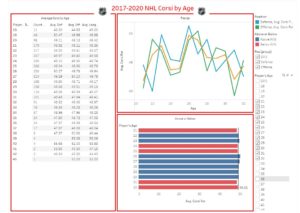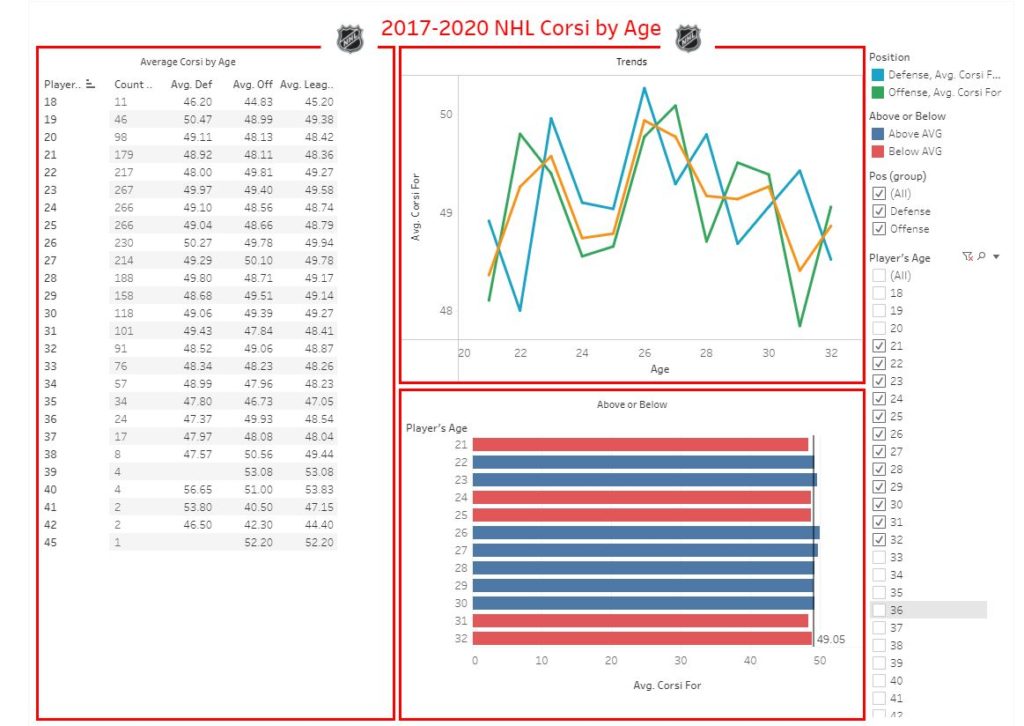Corsi = Corsi For (CF) = Shot attempts for at even strength: Shots + Blocks + Misses[2]
Corsi Against (CA) = Shot attempts against at even strength: Shots + Blocks + Misses
Corsi (C) = Corsi For – Corsi Against
Whether Corsi and Fenwick accurately serve as proxies for puck possession may be up for
debate, but their value in hockey statistics is not. Corsi and Fenwick continue to play a key role in telling
the story from a single game and entire season to an individual and his team. In this brief analysis, we
set out to understand the value of individual Corsi Percentage through the lens of age. The data used
comes from the NHL advanced hockey statistics provided on hockey-reference.com, and it includes the
2017-2018 season to the 2019-2020 season.
 Beginning with players of age 18, who had an average Corsi of 45.2% over the three seasons, we
Beginning with players of age 18, who had an average Corsi of 45.2% over the three seasons, we
notice a staggered upward progression. This progression quickly reaches its peak at age 26 and 27 with a
Corsi of 49.94% and 49.78% respectively. The Corsi % for the following three ages (i.e. 28-30) begins to
drop, but they all remain above the overall Corsi Percentage league average for the three seasons,
which is 49.05. Age 31 takes a significant drop with an average Corsi of 48.41%. The trend then staggers
downwards until age 37. Beyond age 37, some Corsi percentages spike back up, others fall well below
the league, but the number of players in those age brackets is significantly low, making those age
brackets potential and highly likely outliers in the data.
One insight that can be drawn from this lies in detecting the prime ages when Corsi % is well
above the average (ages 26 and 27), and then the ensuing decline through age 37, with ages 28-30 still
above the league average. Secondly, understanding Corsi % by age lends us a keen insight into average
career development (from the perspective of Corsi %). Whether it is a manager rebuilding a team or an
individual player negotiating a contract, understanding this dynamic will go a long way. – Tom Ward, Davenport University
“The ability to see that Corsi production peaks at 27 years old for forwards and 26 years old for defenseman provides us a better understanding of when to renegotiate new contracts. – Cliff Mander, Player Agent, CKM Sports.

0 Comments
Leave A Comment